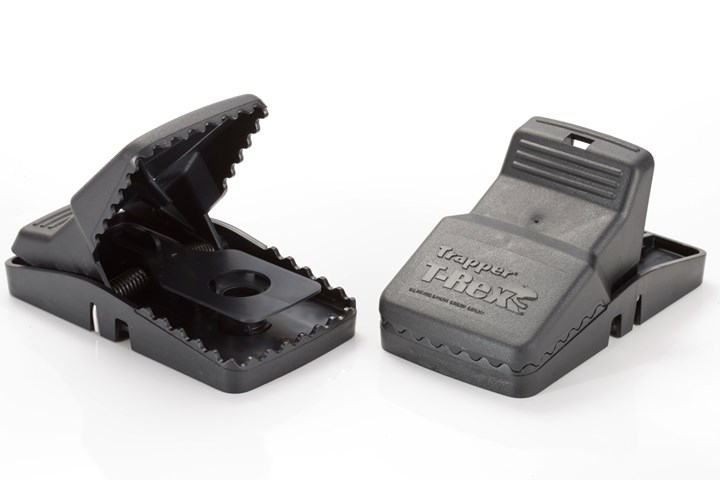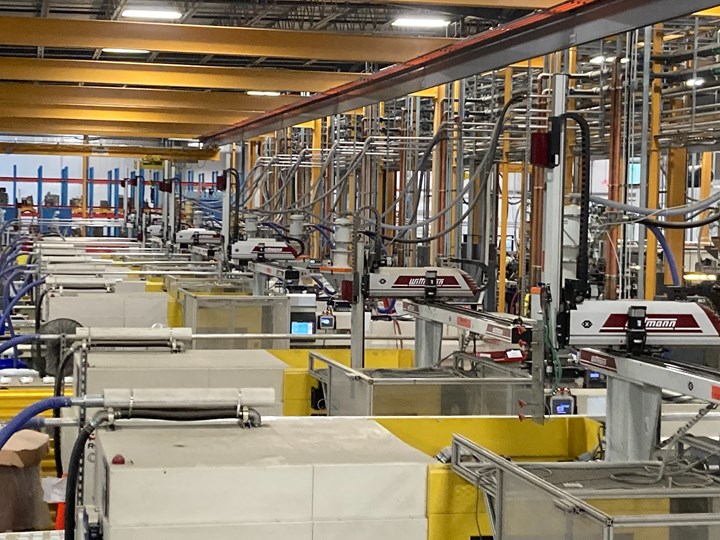Building a Better Mousetrap-Manufacturing Process
Increased demand for its products, which include rodent traps and more, lead Bell Labs to Wittmann Battenfeld to help it better automate its molding processes.
Some of the impacts from last year’s COVID-19 shutdowns were predictable—falling gas prices, shuttering restaurants, lower student test scores—many others were not. Take for example a spike in mouse trap demand. When restaurants in urban and suburban areas were forced to close and their dumpsters were as empty as their tables, rodents that had relied on those receptacles for dinner headed out into the surrounding neighborhoods in a search for food.
That further afield rodent scavenging was good news for Bell Laboratories, Inc., a molder of rodent control products based in Windsor, Wisc. The company saw its sales jump more than 20% over the past year due to increased demand for its products.

Bell Labs saw sales for its rodent control products jump more than 20% due to the pandemic forcing vermin to seek new food outlets as restaurants shuttered.
In business since 1974, Bell Labs has more than 500 employees and sells its products in over 60 countries. The products are manufactured from facilities in Wisconsin (Madison and Windsor) with 26 total injection molding machines ranging in size from 110 to 600 tons. Most of the products are molded with recycled PP or PS.
Automation Newbie
Bell first dipped its toe into automation in 2014 starting with a sprue picker from Wittmann Battenfeld. Since then it has dove all in, employing 15 Wittmann robots with plans to purchase more. The sprue picker was sufficient for servicing simple single-cavity tools but for more complex, multi-cavity hot runner molds, Bell learned that three-axis robot arms would better serve the company.
Once the robots were deployed, Bell saw a series of knock-on benefits to automation. Robots could extract parts that otherwise stuck in the mold, and they also prevented parts experiencing damage from the drop to the conveyor. In addition to faster cycle times because of more efficient part removal, the robots have extended tool wear since only a single ejection cycle is needed to clear components and there is no longer the chance for stuck parts to damage the tool upon closing.

After adding a sprue picker, Bell Labs has added 15 Wittmann robots with plans to purchase more.
In addition to part and sprue removal, Bell Labs has used its Wittmann robots for stacking and closing very small mouse bait stations—a function that had been done by machine operators—as well as counting the parts dropping into totes.
The latest Wittmann robot that was installed at Bell Labs is a W833, which runs on a large 560-ton machine. This robot features a telescoping Y axis, which allows clearance of the overhead crane that is positioned on the ceiling above the machine.
Bell Labs’ experience automating its shop has been so successful that the company has installed an additional W821 robot and is planning to put W833PRO robots on all its larger tonnage machines.
Related Content
-
ICIS Launches: Ask ICIS Generative AI Commodities Assistant
Said to be the first of its kind, this AI assistant will enhance access to ICIS’ intelligence and insights for the energy and chemical markets.
-
Ensuring Repeatability: The Key to Effective Injection Molding Automation
One of automation’s key promises is repeatability: the same movement to the same location, time and time again. But to achieve that, all elements involved — robot, machine, EOAT, mold — must be in and stay in alignment.
-
Scaling New Heights With Vertical Integration
Eden Manufacturing was founded on a vision of vertical integration, adding advanced injection molding capabilities to a base of precision moldmaking and more recently bringing Swiss-type machining capabilities in-house.















